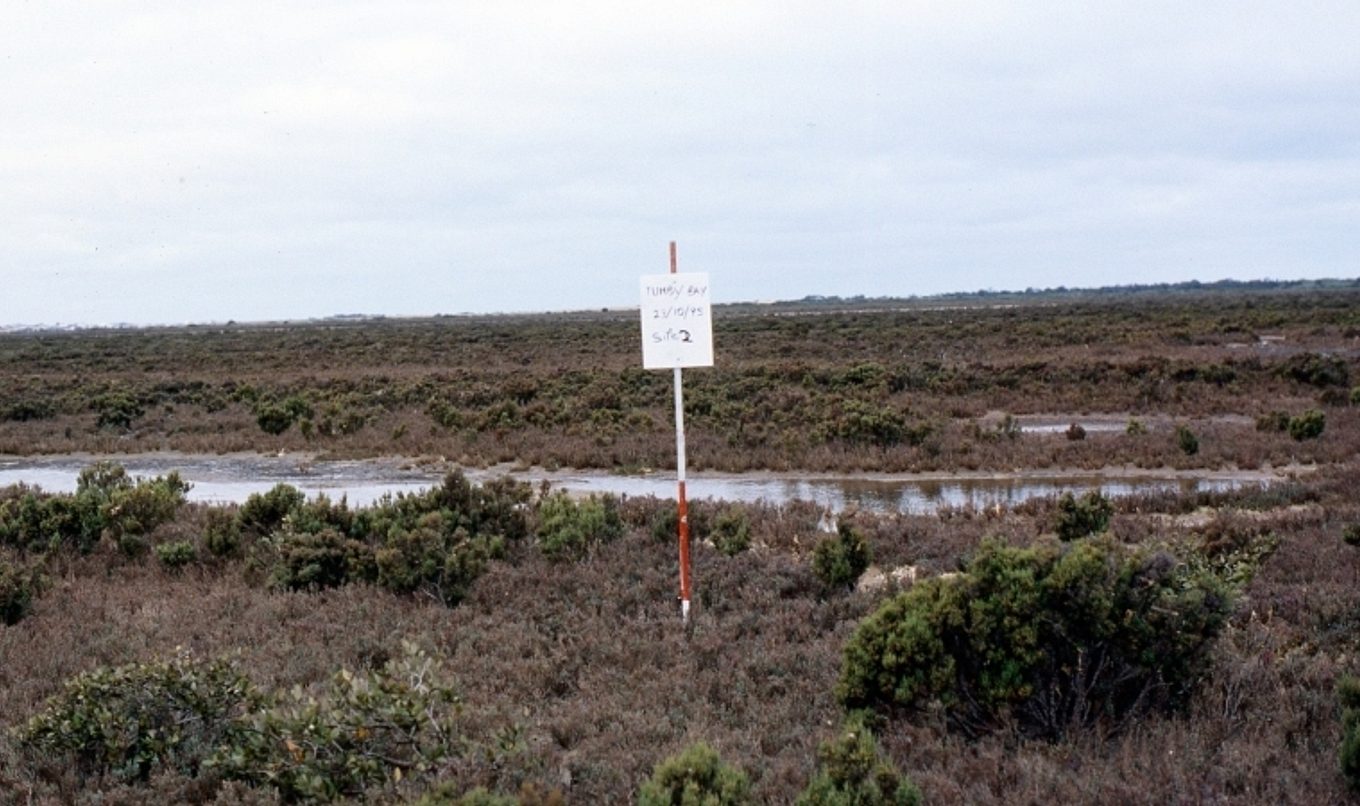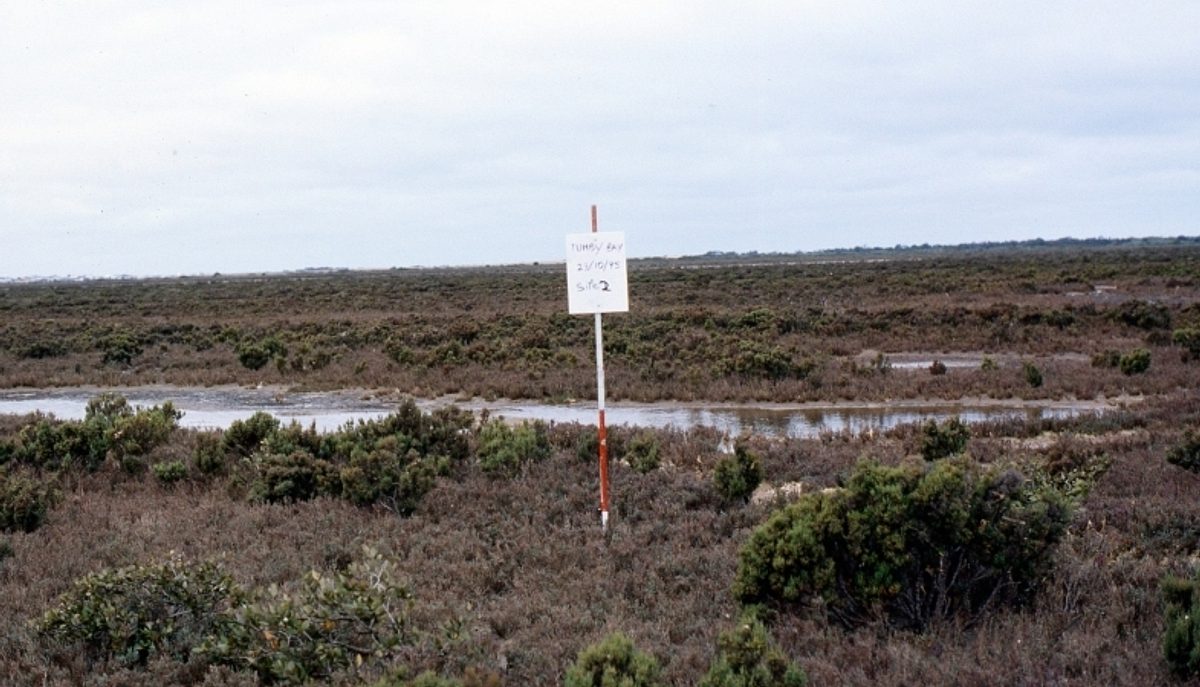Survey of Eyre Peninsula’s super saltmarsh carbon sinks
How has the eastern Eyre Peninsula’s threatened saltmarsh vegetation changed over the past 25 years? That is about to be discovered as the Eyre Peninsula Landscape Board works with the Department for Environment and Water and University of Adelaide to re-survey these areas.

First established as four vegetation profiles in the mid-late 1990’s, the eastern Eyre Peninsula‘s healthy saltmarsh ecosystems are prolific fish nurseries, essential sediment filters, provide a buffer against erosion and storm surge, and are home to an abundance of invertebrates and shorebirds.
The re-surveying of this coastline is increasingly important, given that in 2013 temperate coastal saltmarsh was listed as a vulnerable threatened ecological community under the Environmental Protection and Biodiversity Conservation (EPBC) Act. Saltmarshes are also an important sequester of blue carbon (carbon captured by the world’s ocean and coastal ecosystems).
“Since the initial surveys over 20 years ago, the saltmarsh systems are likely to have undergone change due to human influences and sea level rise,” said Coastal Scientific Officer with the Department for Environment and Water, Sharie Detmar.
“Re-surveying will help identify changes to these vegetation communities. For example, it is likely these systems are moving further inland where there aren’t barriers to movement – such as roads or levees.
“If we can understand how these systems are changing, it will help us decide the best ways to protect and manage them.”
The survey work is being undertaken as part of the Saltmarsh Threat Abatement and Recovery Project, which is supported by the Eyre Peninsula Landscape Board, with funding from the Australian Government’s National Landcare Program.
Planning and Assessment Officer with the Eyre Peninsula Landscape Board, Andrew Freeman, is excited that re-surveying will identify changes in habitat structure, condition and extent, as well as provide valuable information on the carbon content.
“Healthy saltmarshes play an important role as carbon storage sinks, so it is crucial to continue monitoring these sites,” Mr Freeman said.
“This re-survey will provide valuable information to inform priority conservation actions for the Eyre Peninsula’s coastal saltmarshes.”
Whilst undertaking the profile surveys, Industry Research Fellow at University of Adelaide, Dr Alice Jones, will lead sediment sampling to measure current carbon content and changes in carbon storage over time.
Establishing this baseline data is a first for the Eyre Peninsula and quantifying the blue carbon stocks at selected sites could be extrapolated to other Eyre Peninsula sites through spatial modelling.
“Sediment sampling and modelling of the carbon content at sites on Eyre Peninsula will help identify long-term blue carbon sequestration sites, especially if management actions, such as improving hydrological flow, are implemented to improve the condition of saltmarsh which result in an increase in carbon storage,” said Dr Jones.
There are seven other saltmarsh vegetation profiles along the western Eyre Peninsula coastline that will be re-surveyed in the coming years.


